It's the perfect, unique, hostess gift or stocking stuffer that will last a lifetime and takes up no space at all. Almost no one already has one and everyone is intrigued and delighted by it.
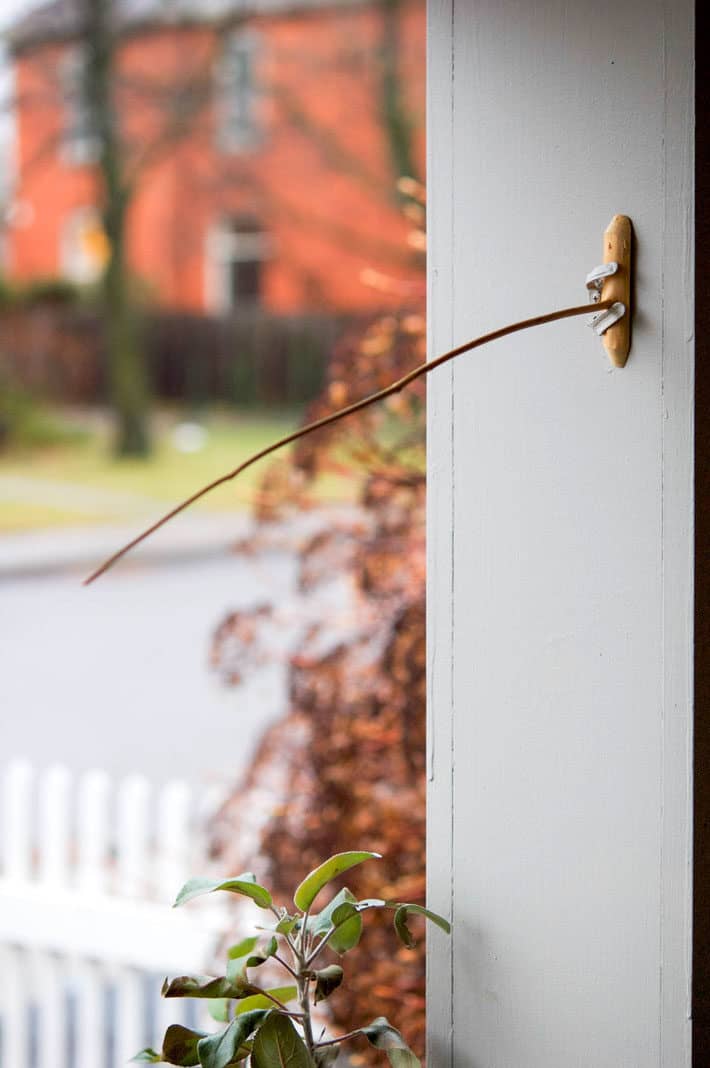
Photo taken on my front porch during a dreary, rainy day.
Are you familiar with weather sticks? They're branches from one specific type of tree that can predict the weather based on whether they're pointing up or down. Like a barometer. And you might have an entire tree filled with them in your house right now.
Do you have any random thing at all? Like a window? Then you are in possession of something equally good at predicting the weather as a weatherperson.
THIS little doohickey on the other hand will be an even better forecaster. In fact, it will never be wrong.
I've always had what someone might call a mild curiosity with the weather. Everyone else would call it a quaint quirk she might want to have analyzed.
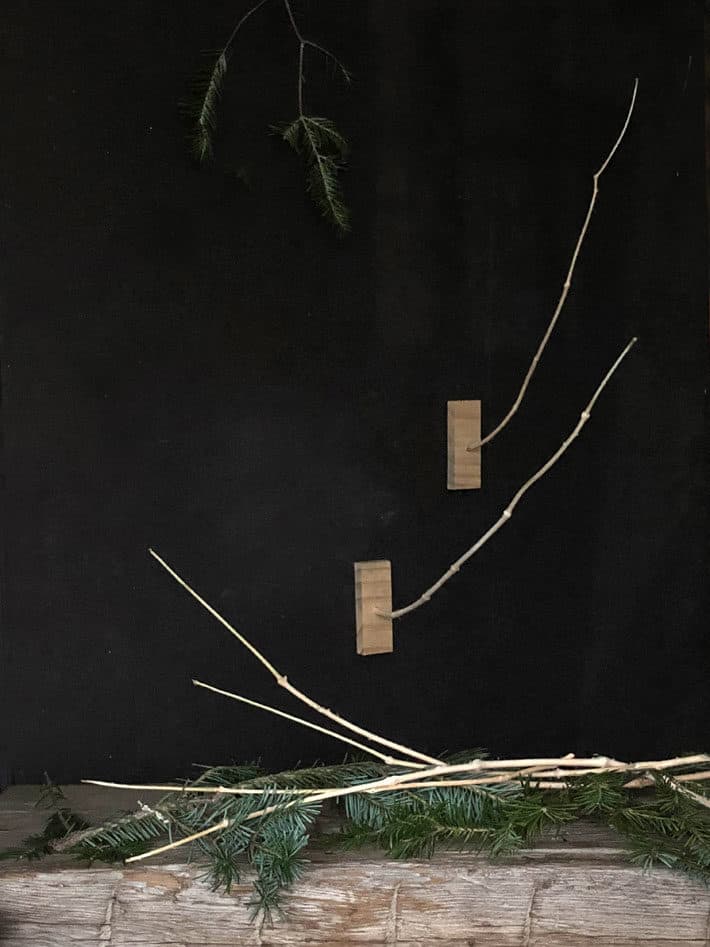
When I moved into my own house I got my own weather stick, just like my parents had on their veranda. I bought it. Since then I've made many for myself and to give away.
Weather sticks have been around parts of Canada and the US for centuries. Which of course means they were first used by the Original original, the Indigenous.
The ¼" stick is just the branch from a specific type of tree that points up when the there's low humidity (normally associated with nice weather) and it points down when there's high humidity (associated with rain and storms).
And that tree is a Christmas Tree
Specifically, to make a weather stick, you need a balsam fir. The tree you *might* have in your house this year for Christmas.
Table of Contents
The Science of Weather Sticks
A Balsam Fir is the only tree (that I know of) that reacts to the weather in this way and it's because of something called "Reaction Wood". Reaction wood is wood on a tree that reacts to the stresses of the environment. Normally trees have reaction wood all around their branches. For instance, if a tree has strong winds coming from the East it will develop stronger wood on that side of the tree as a reaction.
The Balsam Fir has its "reaction wood" only on the underside of its branches. Which means the cell structure of the branch on the underside is different and will expand and contract based on moisture. This is what makes the stick move up and down. The underside of the branch is pulling and relaxing making the stick go up and down based on the moisture in the air. Like a ligament under your finger for example.
How to Identify a Balsam Fir
Save yourself a lot of trouble and look for a tag on the tree if you're buying it from a lot. It should say the variety of tree. Ditto for a tree you cut down from a tree farm. Just ask them. They'll know.
A Balsam Fir is easy to tell apart from a Spruce because a Balsam Fir has soft needles that don't hurt when you touch them. This isn't true for the angry, angry needles of a Spruce tree.
Identifying a Balsam Fir compared to a Fraser Fir however is best left to the professionals. Tree farmers, dendrologists, Santa. Those kind of people.
Someone who is a tree expert could probably tell the difference between a Fraser Fir and a Balsam Fir but to anyone else they look pretty much the same. Flat needles, two white stripes on the underside of the needle and a dull tip. Whoever is selling the tree to you should know what it is.
The only tip I can give you if you've already bought your tree is if you can feel the point of the needles when you wrap your hand around a branch (it won't really hurt, but you'll be able to feel points), chances are better that it's a Frasier Fir.
When you buy those miniature trees (2'4' tall), they're normally Balsam Firs. So to make your own weather sticks you can buy a single 2'-4', $19 Balsam Fir and get several weather sticks out of it plus a nice little tree for inside or on your porch.
Make a Weather Stick from a Balsam Fir
Technique #1
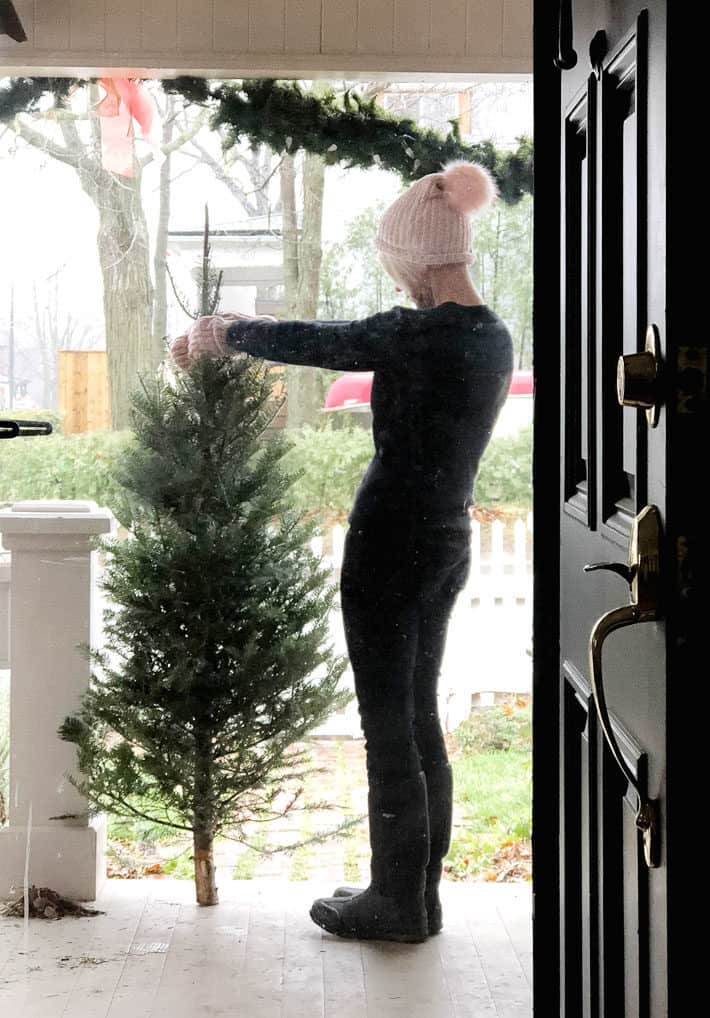
- Get yourself a Balsam Fir. Look for one that has several thin, long straight branches coming out of the trunk.
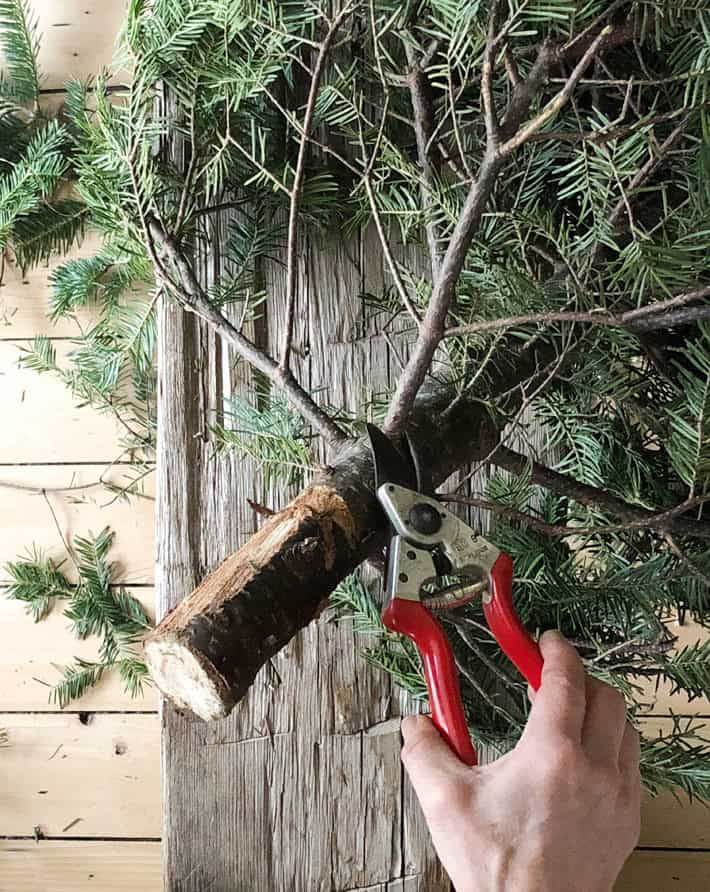
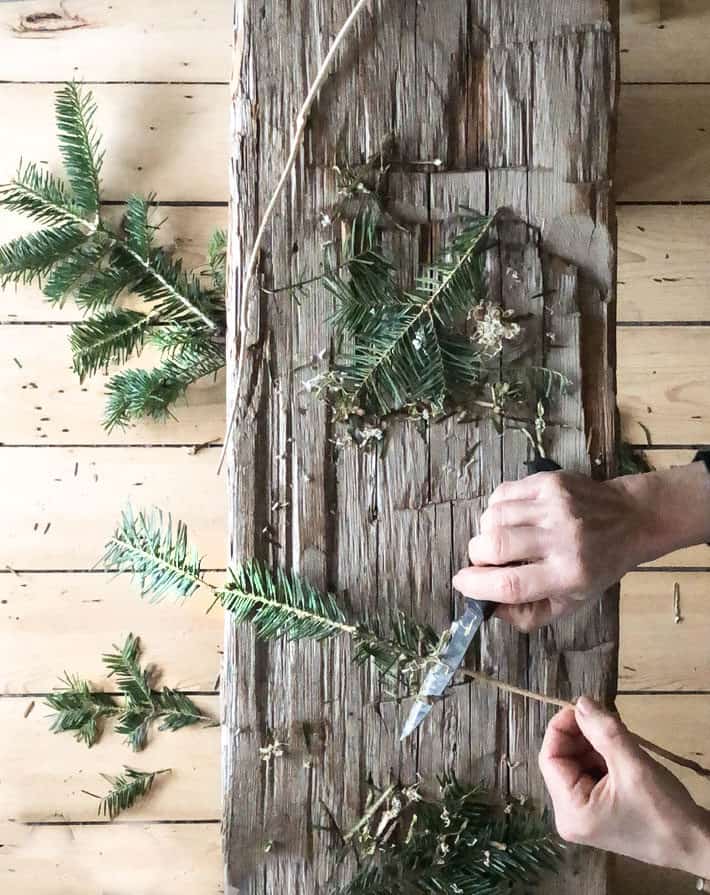
- Pick a branch that's ¼" in diameter or so and cut it where it meets the trunk.
2. Clip off the smaller branches coming out of your main branch and then gently peel or scrape the bark and needles off.
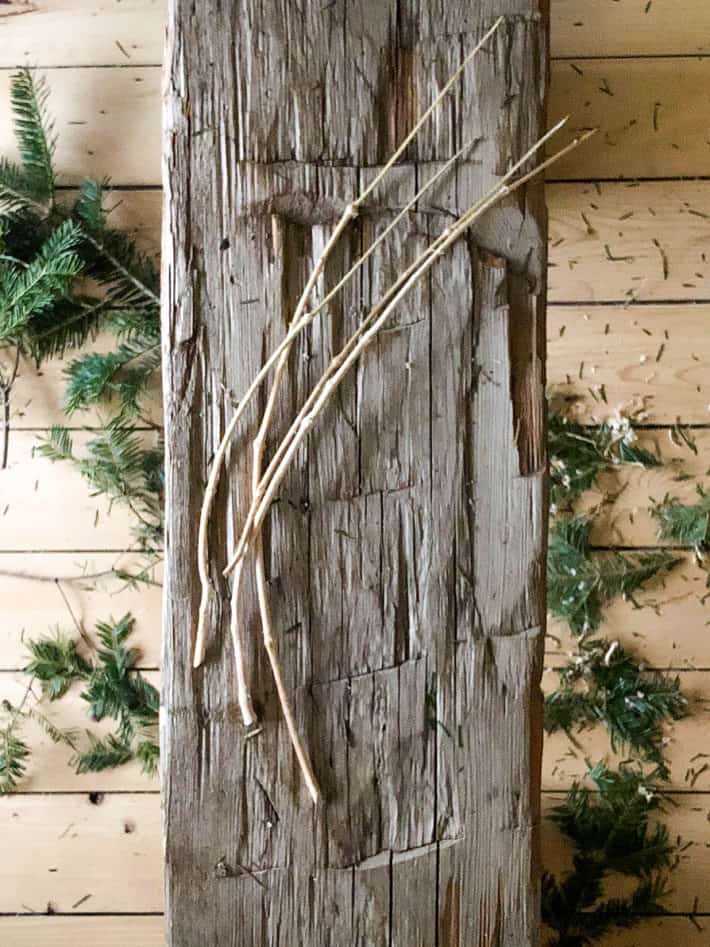
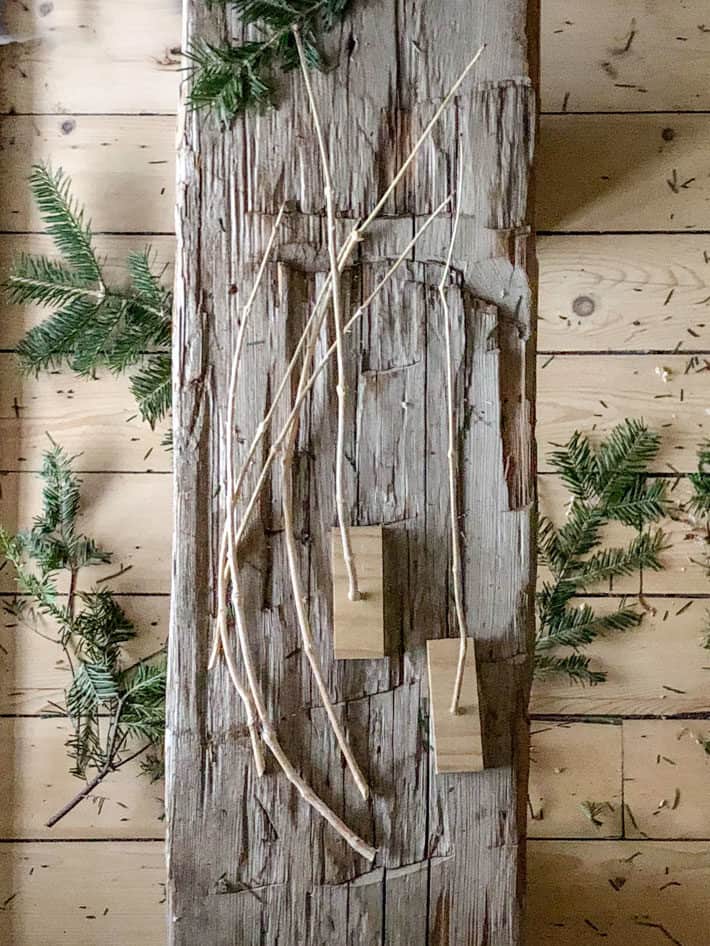
3. Allow your stripped branches to dry out for a day or so.
4. Cut small mounting plates out of scraps of wood. Drill a hole in the centre of the mounting plate with a regular drill and drill bit that corresponds to the size of your twig. You might need different sized drill bits for each twig. Squirt a tiny bit of wood glue into the hole and then push the twig into it.
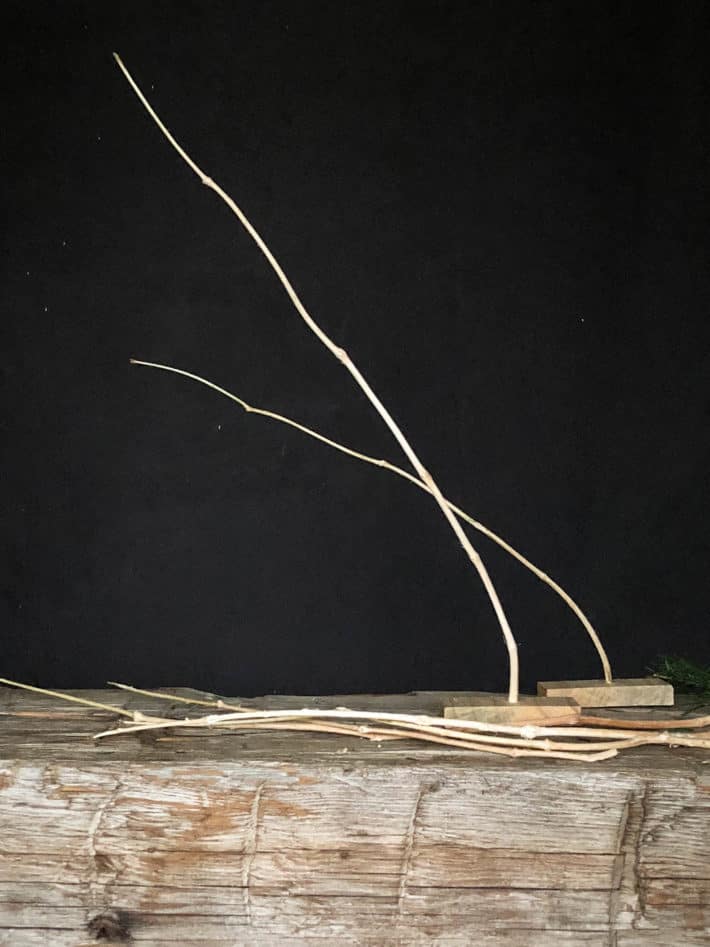
5. Hang your weather stick outdoors in a protected area.
Weather Stick Tips
- Make sure you check for long straight branches. Trees that are pruned like commercially sold Christmas trees are pruned to within an inch of their life. This means a lot of the branches will be all squirrely pointing this way and that.
- Your stick should be a length of around 14-16".
- You can also cut the trunk into 4" sections and chisel away the branch from the trunk so you have a built in mounting plate. This is a slightly harder, more time consuming way of making a weather stick.
- Hang your weather stick so that it is hanging opposite to the way it grew on the tree. This will make sure it turns "up" in good weather and goes "down" in bad.
Technique #2
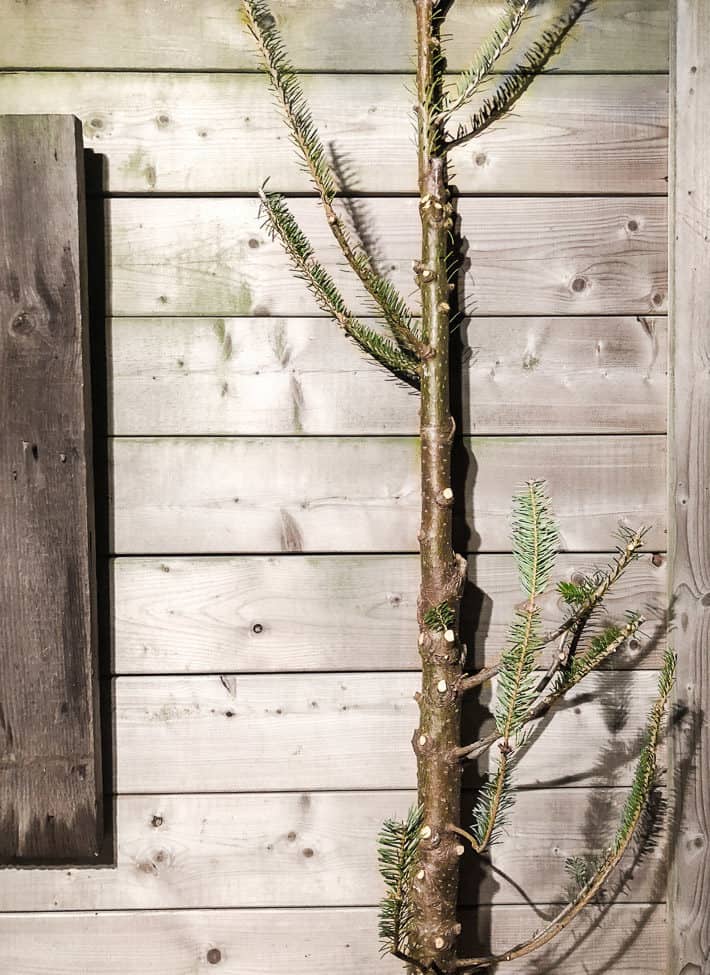
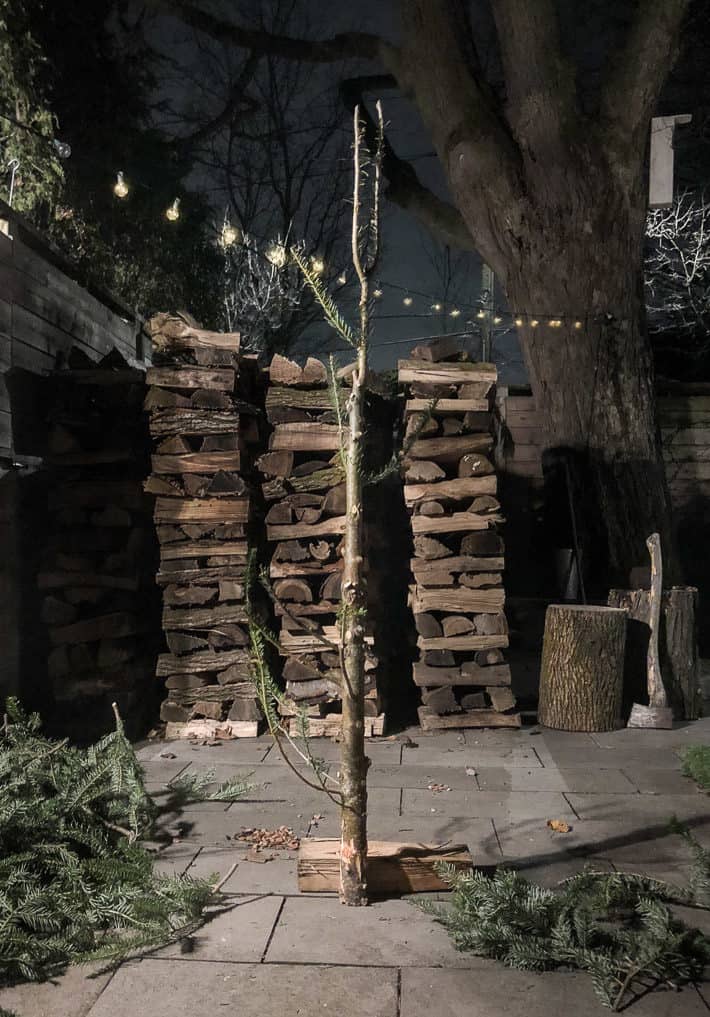
- Cut all inappropriate (bent, thick or stumpy) branches off of the tree, leaving only thin straight sticks that haven't been pruned.
You'll be left with the world's most scraggly tree.
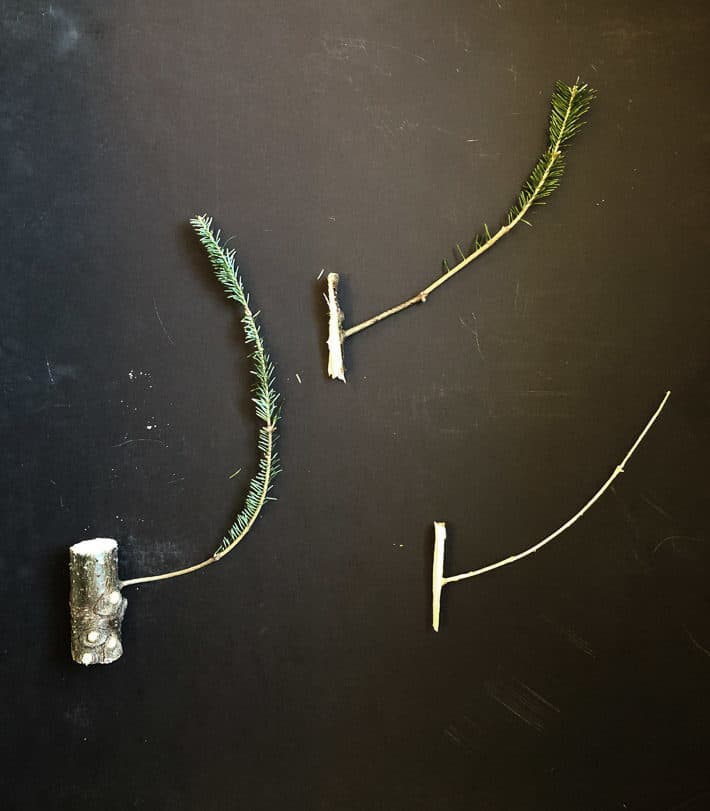

2. Cut the tree trunk into 4-6" lengths with the potential weather sticks in the centre. Chisel the stick away from the trunk, leaving enough trunk to act as a base (like a mounting plate) for the stick.
4. Drill a hole into the base (mounting plate) and hang it outside on your house, porch, garage or in your garden.
Or, you can buy a Canadian weather stick and with all the spare time you saved by not DIYing your own, you might have time to take a foragin gwalk to make your own wreath. Or buy the greenery and make a wreath. I'm very flexible that way.
Either way, keep a weather stick in mind if you want a little emergency gift to have on hand, for stocking stuffers, or as a hostess gift that's not a bottle of wine.
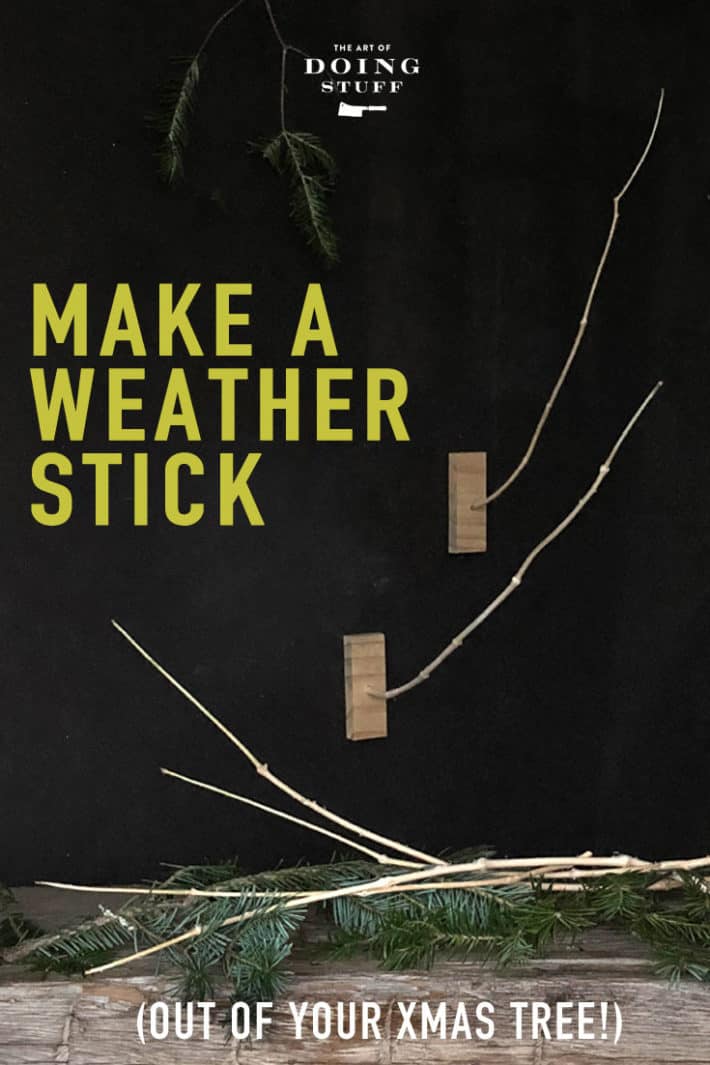

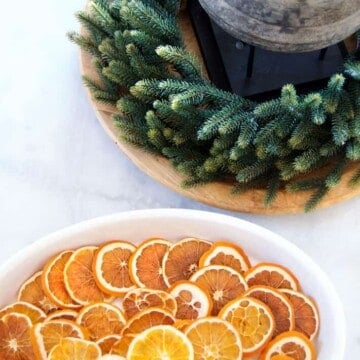
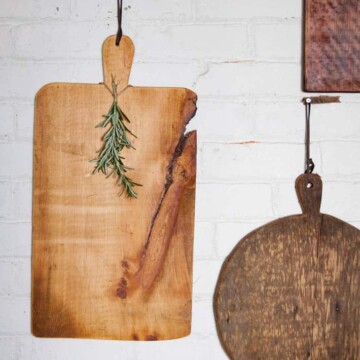

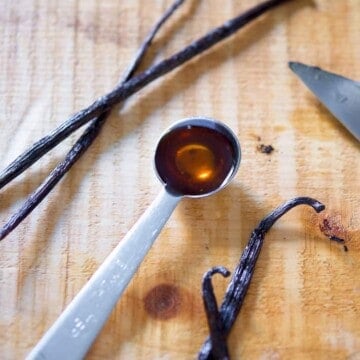
I thank you for the tutorial on identification and hope the fir tree in my backyard is a reactive Balsam Fir. This is sure to go over well in my family but I wonder if the high humidity in Florida will affect its ability to react? It can be 90% humidity and no rain on some days. That's why we sweat so much. But I'm sure going to try this. I got a watering can, a tooting pen, and now a homemade reactive tinkle stick. What more could I ask Santa for, right?
Hi Mary W. The weather is the same here. Ontario has very high humidity so I expect the reactive tinkle stick would work just fine for you. ;) ~ karen!
And to think all my adult life I've been just turning on the TV or radio and listening to the weather-person. When I 'could' have simply checked if my stick was up or down. I feel like a fool.
We've all made mistakes in this life. ;) ~ karen!
We have been using these in Maine to predict the weather and they are great!!! We buy them already made so this is wonderful.
Basically, if your weather stick is pointing upward, it's going to be a good day for all, involved! I like how you wrote a whole story about it, without straying into the depths of my own depravity, lol! Thanks Karen!
Interesting! I grew up on a farm and seem to be much more interested in checking the weather every morning than many of the other elderly people who live in my senior housing apartment who blunder outside without the appropriate garb for now or later.
I like weather rocks. A great pet, never needs feeding or a poo pickup.
Wet, it's raining, dry, not raining,
gone, tornado. (Or that d@$! opossum again.) 😆
So cool! I had a weather stick at my old house. I didn’t realize they were balsam fir. We have 100 acres in Haliburton, it’s mixed lot but lots of young balsam fir. The telltale distinction of balsam is the resin blisters on the trunk bark. With minimal handling results in sticky hands, covered in pitch.
I tried and tried to see blisters and just can't identify them. I don't have enough experience. :/ I currently have 2 trees up, a Frasier and a Balsam and last night I was going back and forth all night trying to figure out which was which. (the tags dropped off when I cut the ends off and now I don't now which is which). I'll go back to the trunks and try to see the resin blisters again, thanks! ~ karen
Interesting- I wonder if balsam fir grown for Xmas trees are a variety bred to have fewer or no blisters. This would make sense because the sap is so sticky and aggravating, even though you only handle it to put it up and again to drag it back out after the holidays.
I'd never heard of a weather stick before, but my grandparents had a weather rock... http://www.usscouts.org/profbvr/weather_rock/
I just took a quick look but that looks fun! ~ karen
Leaving me to proclaim if you wait long enough the internet will provide the answer. I have been searching my MacBook of Knowledge for the answer to which tree these sticks come from for a very long time. Kinda gave up for a while and now miraculously you have posted about it. Yeah!!! My faith in the MacBook of knowledge has been restored, thank you.
In the next few weeks I plan on becoming an expert on accurately identifying a Balsam Fir so I might be even more help to you next year. ~karen!